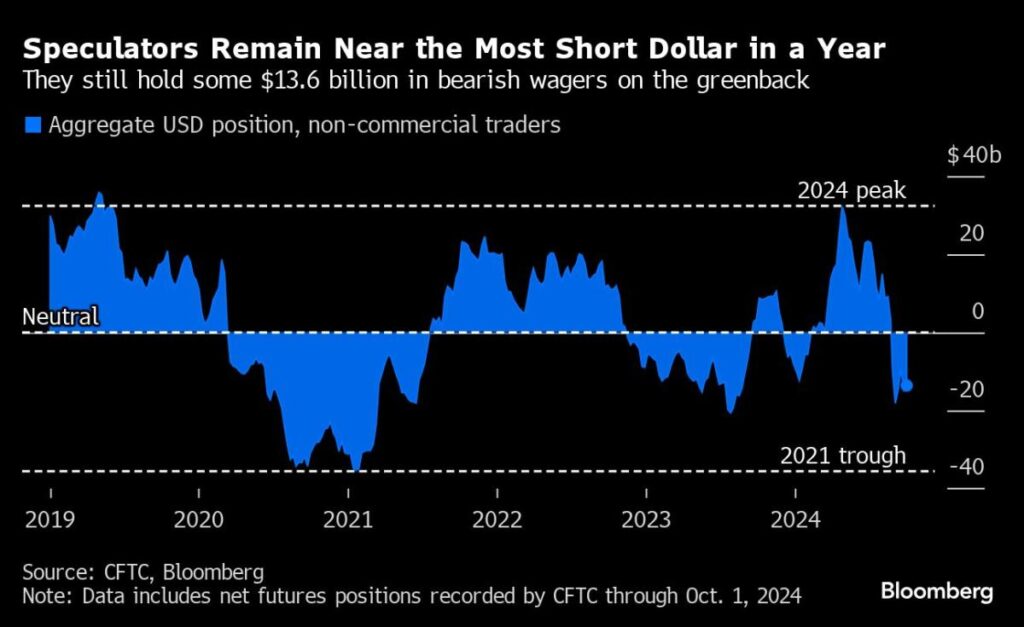Traders are currently driving the U.S. dollar towards its second consecutive weekly gain, fueled by expectations for a more tempered approach to interest rate reductions by the Federal Reserve. The Bloomberg Dollar Spot Index has risen by 0.5% this week, contributing to a total increase of 1.7% for October. This movement reflects robust economic data from the U.S. that has raised hopes for a cautious pace of rate cuts. In contrast, other central banks are leaning towards additional monetary easing to stimulate their respective economies. Market participants are predicting that U.S. officials will only lower borrowing costs by a quarter-point at the upcoming November meeting.
Yusuke Miyairi, a currency strategist at Nomura International Plc, noted that the current strength of the dollar is largely due to the market’s evolving narrative. Traders are now more focused on whether the Fed will pause rate cuts rather than the extent to which they might be reduced. Despite some stalling in dollar momentum towards the week’s end, it remains near its highest level since mid-August. Interesting shifts are also occurring among speculative market players, such as hedge funds and asset managers, who have reduced their bets against the dollar, reflecting a decrease from $14.8 billion to $13.6 billion in net shorts.
The support for the dollar can be attributed to recent data indicating a resilient U.S. labor market in September, along with modest advances in addressing inflation. Consequently, traders have begun to temper their expectations for substantial rate cuts in the remaining Federal Reserve meetings for 2024. Additionally, the escalating geopolitical tensions, particularly amid ongoing conflicts in the Middle East, have heightened the appeal of the dollar and other safe-haven currencies like the Swiss franc. This has added another layer of demand for the greenback in an uncertain global landscape.
However, moving forward, the outlook remains hazy. With the U.S. presidential election around the corner, the premium for hedging against further gains of the dollar has surged, approaching its highest levels since July. This increased demand for protection underscores the concern among traders regarding potential volatility stemming from the election outcomes. JPMorgan Chase & Co. strategists, including Patrick Locke, have highlighted that the market is exhibiting a “too complacent” attitude towards the dollar, arguing that there are material risks associated with the election results and evolving tariff policies.
The situation reflects a delicate balance in the financial markets, where the perception of risk is critical in influencing currency movements. The Fed’s decisions, the implications of geopolitical dynamics, and domestic political developments are all interlinked in shaping market sentiment. As traders recalibrate their expectations, the market is closely monitoring economic indicators and geopolitical developments to adjust their strategies accordingly.
In essence, the current dynamics surrounding the U.S. dollar reveal complex interactions between interest rate expectations, economic indicators, and geopolitical risks. As traders navigate through these evolving conditions, their actions will play a significant role in determining the dollar’s trajectory in the upcoming weeks and months. With the looming risks associated with the U.S. elections, the dollar’s path may experience heightened volatility, making the markets even more intriguing for participants.

